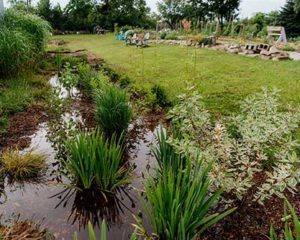Discover the power of plants. Landscaping features like rain gardens, native plants, and trees catch and soak in polluted stormwater runoff.
Plants and trees that are native to Michigan boost your landscape’s ability to absorb and infiltrate polluted runoff. Their deep, thirsty roots are much better at keeping water clean than the shallow roots of turf grass. Using native plants and trees in a rain garden amplifies their clean-water power even more.




